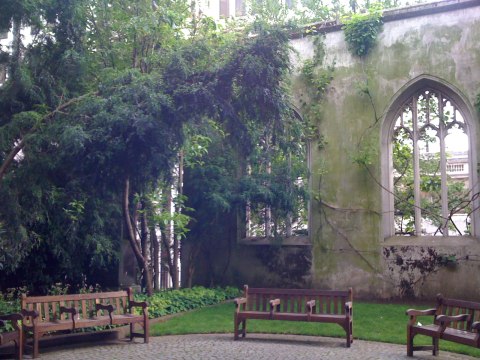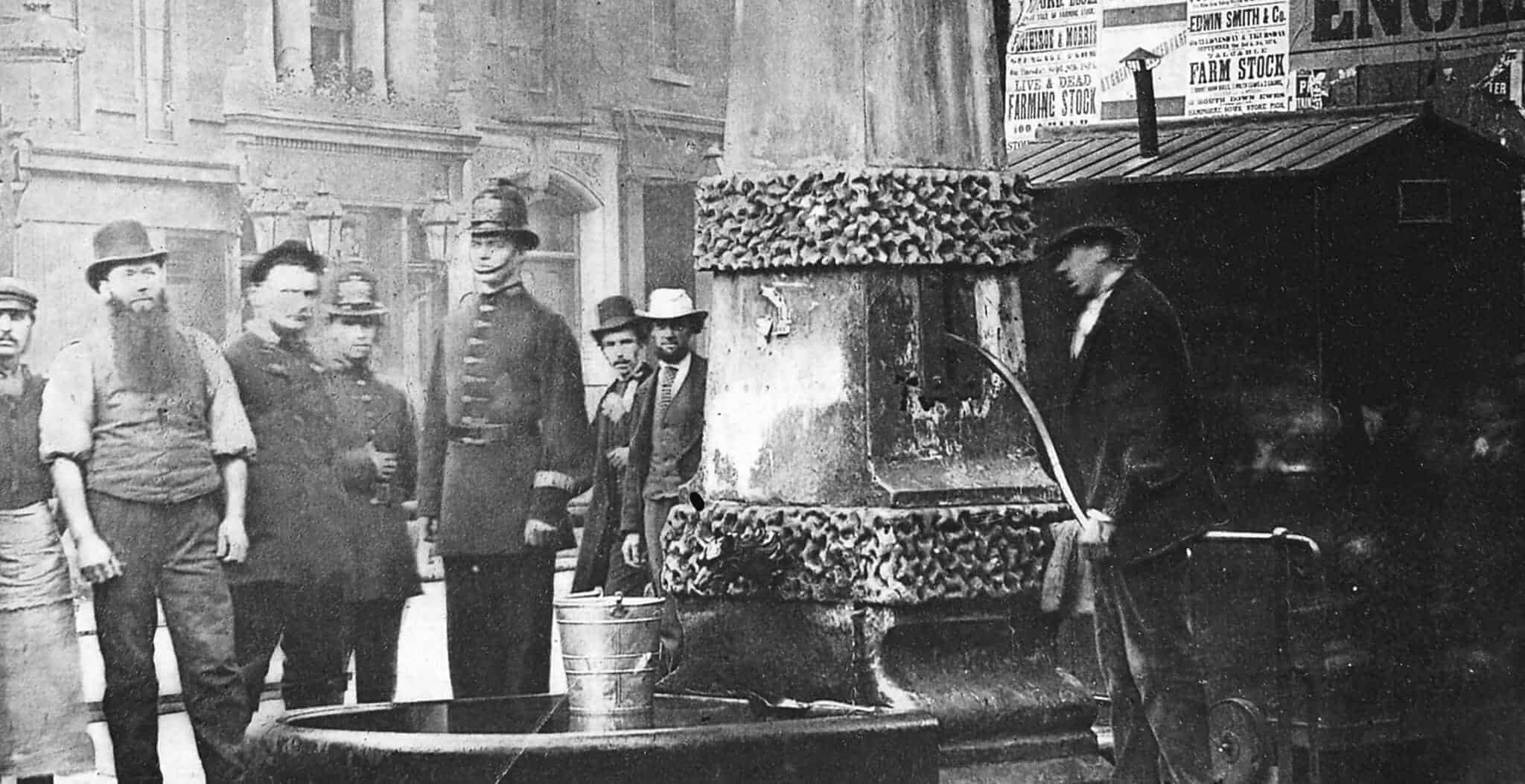St. Dunstan in the East Church Gardens are often referred to as the most beautiful gardens in the City of London, and understandably so! The church itself was built in the early 12th century and survived unscathed until the Great Fire of London in 1666. Although the fire seriously damaged the church, it was not severe enough to warrant a complete rebuild. Instead, the church was patched up over the next 30 years, with the final stage being a replacement steeple (designed by Sir Christopher Wren, he is said to have retained the same gothic style as the original steeple).
Unfortunately the church fell into decline by the early 1800’s and the decision was taken by the local parish to rebuild it. The rebuilding took place between 1817 and 1821 by David Laing (a renowned architect also known for designing New Custom House) and William Tite (another architect of the time, known for designing the Royal Exchange). Although this was a complete rebuild, Christopher Wren’s gothic steeple was retained.
In 1941 the church was completely gutted in the Blitz of the Second World War and lay in ruins for the next 25 years; in fact, the only parts of the church that were left unscathed were Wren’s tower and steeple. Eventually, the City of London Corporation decided to incorporate the ruins into a garden in 1967, and it was opened to the public in 1971.

Today the gardens and the church ruins are a Grade 1 listed building, meaning they’re protected from any further development, and cannot be destroyed. The gardens themselves are a popular lunchtime retreat for City workers who want to escape the hustle and bustle of the nearby streets. It is especially popular in the summer months as the surrounding ruins help to reflect the heat away and keep the gardens cool.
The building itself is no longer in regular use by the Anglican Church, although the occasional open-air service is held there (every Palm Sunday for example). Also, Wren’s tower and steeple now house the All Hallows House Foundation, a charity devoted to providing heath services to those that live and work in the City of London.









